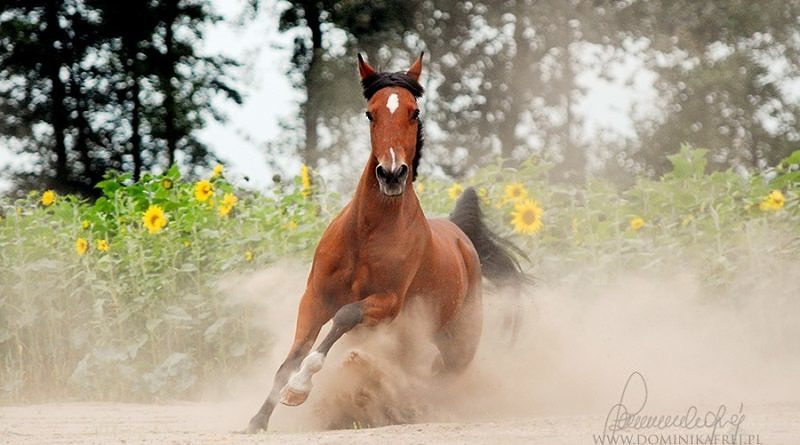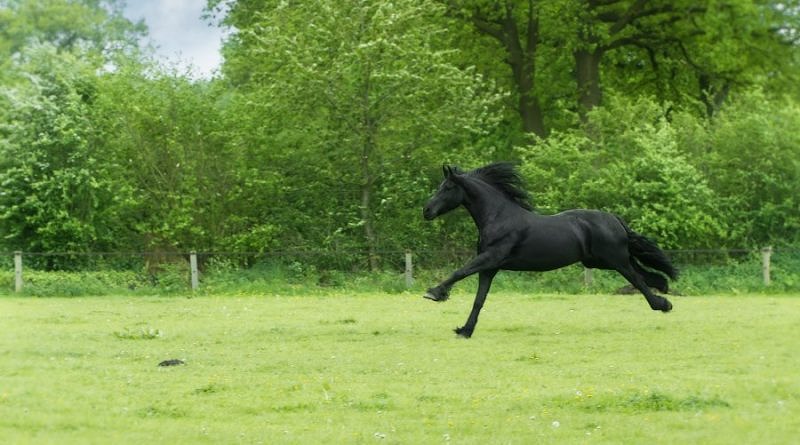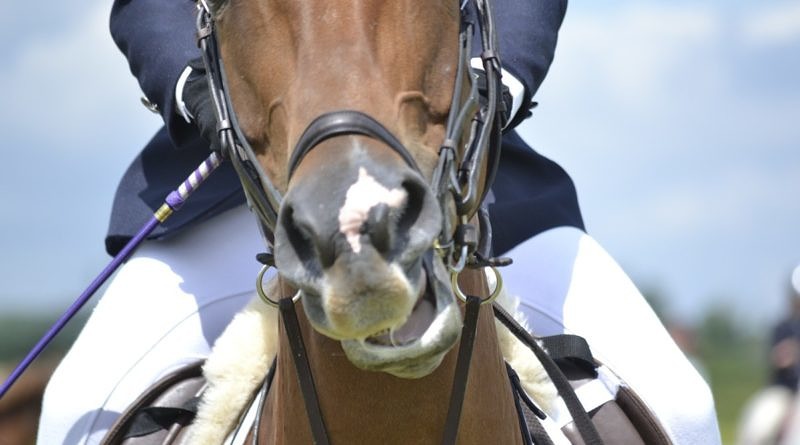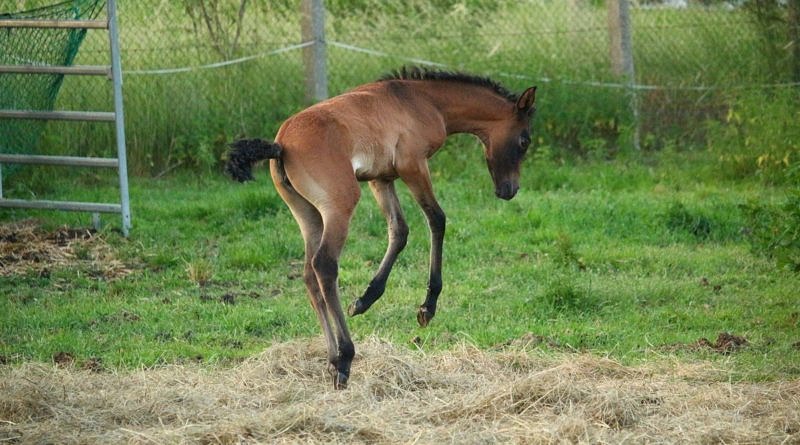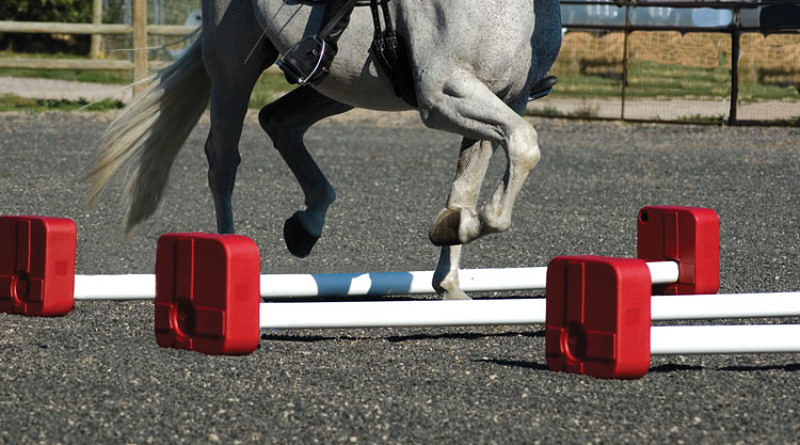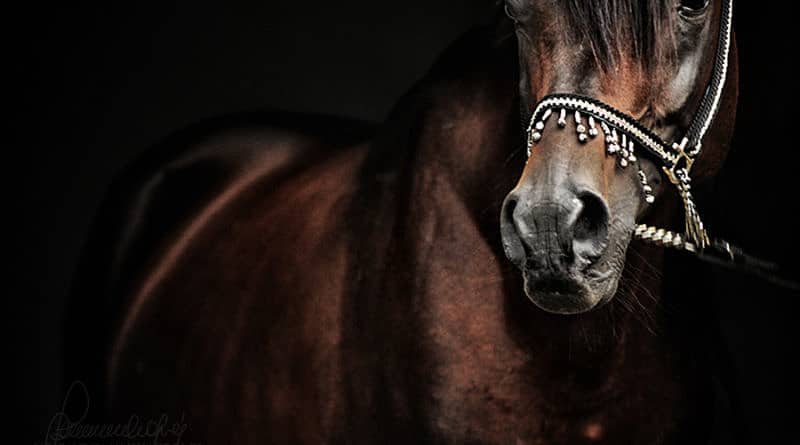The Unexpected Benefits of Spooking
Spooking can be scary, funny or frustrating. But why do horses spook, and is there a silver lining (Horse: AAAGH A SILVER LINING!!!) to this behaviour?
Riding a horse that is prone to reactive spooks, it may be difficult to imagine that there could be a silver lining to this universal equine behaviour, but in fact the tendency of horses to run away from monstrous crisp packets and ghoulish plastic bags is a blessing in disguise.
What is spooking?
Spooking is a term used to describe a variety of different behavioural responses to a perceived threat. Some horses will tense up and freeze, others have a more violent reaction and may leap into the air, others will take off in a fearful flight – and everything in between. Regardless of the exact response the horse demonstrates, the underlying cause of the reaction is a perceived threat that causes the horse to experience fear.
Spooking can be a very stressful thing for the human involved because horses process and react far more quickly than we do. By the time we register the funny-looking pigeon, the horse has already seen or heard it and jumped sideways. For many riders, trying to anticipate what a horse will next spook at becomes a preoccupation – we may pick out the distant log that we know our horse will think is hiding a lion and prepare ourselves for the reaction – but inevitably horses will react to things that are entirely unexpected, or perhaps not even there.
Why are horses so prone to detecting threats whether they are there or not? Most people are aware that horses are “flight” animals. That is, they are a prey animal whose main defence from predators is to run. However this is not a full answer in and of itself. Why should horses react to plastic bags or tarpaulins? Does the horse think there’s a dangerous predator hiding in them?
The answer to that is almost certainly no. It is very unlikely that horses think there is a predator hiding in objects or associated with objects they find frightening. For one, most domestic horses have no experience at all of predators of any kind. They are just as likely to be afraid of sheep and crisp packets as being afraid of a dog. A horse is not relying on careful processing of the risks when they flee from a plastic bag – they are reacting instinctively and reflexively.
This is also why it is very unusual for a horse to do much beyond running a few strides – once the horse starts processing what has happened and realises that there is no threat, they will interrupt the flight response.
This instinct to run from objects that move or sound a certain way is the consequence of millions of years of evolutionary history where it paid to over-react rather than be complacent. To over-react risks wasting a little energy – to be complacent could cost you your life. Horses that tended to act first and think later were the ones that escaped real attacks most successfully – so they went on to have foals and their foals inherited these same paranoid-seeming tendencies.

For this reason, horses err on the side of over-reacting to sounds or sights in their environment that in some way resemble the sights and sounds associated with danger in their ancestral home. But in order to be able to react quickly, they have generalised their response not to a specific threat such as, say, a “wolf” but to all things that move or make unexpected sounds. These “heuristics” or simple rules give horses remarkably fast reactions – but they also account for why horses seem to be afraid of pretty much everything!
Making exceptions
However, just as it is mentally and physically taxing for us to preempt a spook, so it is taxing for a horse to constantly react to spooky objects or sounds in their environment. For this reason, horses have a way out! Instead of always reacting to everything no matter what and never changing their behaviour, horses can become accustomed to specific sights and sounds and stop reacting to them. This “habituation” or “desensitisation” occurs when a horse has repeated experiences of a stimulus that does not produce negative outcomes. The corollary of this, however, is that repeated negative experiences can very quickly reinforce a fearful response – a subject covered in the article Learned Fear.
Desensitisation occurs when a horse learns to make exceptions to its broad rule on spooking. These exceptions are specific – which is why desensitisation to prevent spooking needs to be done thoroughly through exposure to lots of very different objects, contexts and experiences. Teaching a horse to not be afraid of a tarpaulin will not also show it that logs are harmless or that a tractor won’t hurt them or the sound of a motorbike isn’t dangerous.
The silver lining to the horse’s over-reactive tendencies is how rapidly they can learn to make these exceptions. While humans may go a lifetime unable to overcome an over-reaction to certain stimuli (also known as a phobia), horses can be shown the harmlessness of a previous trigger within hours, if not minutes.
This is an amazing quality of these animals that makes it possible for them to exist in the wild in relative calm, only responding with flight to relevant cues. In other words, we can think of a horse’s default belief as being that all things that move and make suspicious noises (or smell funny or feel strange on their skin or to walk on) are potential threats and must be reacted to. But with exposure, they quickly learn to make exceptions to this rule – but the exceptions are rather more specific than we, as humans, tend to imagine.
As well as horses becoming “bombproof” through exposure to lots of different ordinarily fear-inducing stimuli, it is possible to alter the way in which horses spook. However, this is not achieved by changing what the horse spooks at – it is done by altering the response the horse has when a spook actually occurs.
For instance it is possible to condition a horse to always face in the direction of a fear-inducing stimulus rather than to run. In some instances this might be a helpful tool for the rider – but it can also be counterproductive. Weighing up the pros and cons of different approaches is important and in the end the best method will be the one that suits the specific horse and rider/handler in their specific context.
Regardless of how we choose to shape our horses’ fear responses, we benefit from knowing why horses react as they do. It not only makes us more empathetic to the tendency to spook in the first place but also potentially means we can be more confident in our horse’s ability to overcome fear (with the right kind of assistance from ourselves) and trust that our horse’s response, though a bit much for a crisp packet, is still limited and under the horse’s control.

